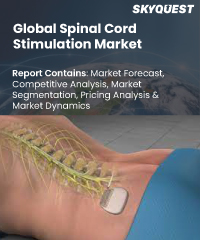
Product ID: SQMIG35A2711

Report ID:
SQMIG35A2711 |
Region:
Global |
Published Date: February, 2024
Pages:
165
|
Tables:
65 |
Figures:
74
Spinal Cord Stimulation Market Drivers
Continuous technological advancements and government guidelines to favor the market growth.
Spinal Cord Stimulation Market Restraints
The high costs of treatment and uneven distribution of medical service are hindering the market growth
Our industry expert will work with you to provide you with customized data in a short amount of time.
REQUEST FREE CUSTOMIZATIONSpinal Cord Stimulation Market size was valued at USD 3.02 billion in 2019 and is poised to grow from USD 3.25 billion in 2023 to USD 5.83 billion by 2031, growing at a CAGR of 7.58% in the forecast period (2024-2031).
Want to customize this report? This report can be personalized according to your needs. Our analysts and industry experts will work directly with you to understand your requirements and provide you with customized data in a short amount of time. We offer $1000 worth of FREE customization at the time of purchase.

Product ID: SQMIG35A2711